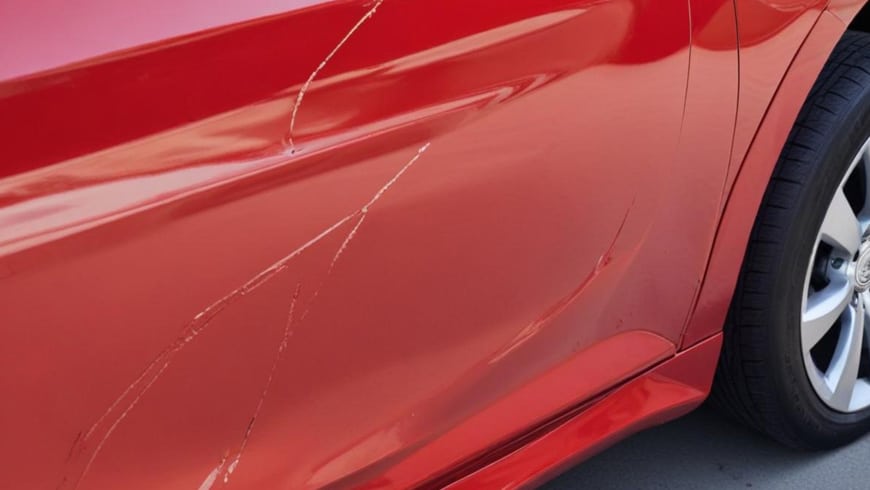Vandalism can be a frustrating and costly experience for car owners. Whether it’s a keyed door, a smashed window, or graffiti on your vehicle, the damage can be both emotionally and financially distressing.
But does your car insurance cover such malicious acts?
The answer to this question rests entirely on the type of coverage that is included in your policy.
Car insurance typically covers vandalism as long as you have comprehensive coverage on the vehicle that was vandalized.
A lot of drivers assume car insurance covers everything, but that’s just not the case. In order to have these types of damages covered by insurance, you must have comprehensive coverage in place.
Understanding Comprehensive Coverage
Comprehensive coverage is an optional add-on to your basic auto insurance policy. It protects your car from damage that occurs outside of collisions.
This includes theft, natural disasters, falling objects, and—you guessed it—vandalism.
While not legally required, comprehensive coverage can be a lifesaver when the unexpected happens. Imagine waking up to find your car spray-painted or your tires slashed.
Without comprehensive coverage, you’d be footing the entire repair bill yourself.
How Your Policy Defines Comprehensive Coverage
There is a very good chance that you haven’t read through your entire car insurance policy. Most drivers don’t. Nonetheless, your policy is a legal contract that spells out exactly what is and what is not covered.
Many car insurance companies use kind of a standard “boilerplate” form that is based on the Insurance Services Office (ISO) standard auto policy form.
Your policy language could be slightly different since companies can modify the language to fit specific requirements, but here’s how a standard car insurance policy lays out comprehensive coverage:
“We will pay for direct and accidental loss to ‘your covered auto’ or any ‘non-owned auto’, including their equipment, minus any applicable deductible shown in the Declarations. We will pay for loss caused by:”
This introductory statement sets the stage for what comprehensive coverage entails. It’s important to note a few key points:
- The coverage applies to both your insured vehicle (“your covered auto”) and any vehicle you’re temporarily using (“non-owned auto”).
- It includes the vehicle’s equipment, which typically means permanently installed items.
- The phrase “direct and accidental” is crucial—intentional damage you cause yourself isn’t covered.
- Your deductible, as specified in your policy declarations, will be subtracted from any payout.
Following this introduction, the policy typically lists the specific perils covered. While vandalism is indeed one of them, comprehensive coverage actually protects against a wide array of non-collision related incidents.
Here’s a more complete list of perils typically covered:
- Theft or attempted theft
- Vandalism
- Fire
- Missiles or falling objects
- Windstorm or hail
- Earthquake
- Flood
- Malicious mischief
- Riot or civil commotion
- Contact with birds or animals
- Breakage of glass
- Explosions
This list shows why comprehensive coverage is often referred to as “other than collision” coverage. It’s designed to protect your vehicle from pretty much anything that could damage it outside of a traffic accident.
Real-World Scenarios
Let’s consider a few examples to illustrate how this coverage works in practice:
- Sarah parked her car on the street overnight. In the morning, she found her side mirror broken off. With comprehensive coverage, her insurance would cover the repair costs, minus her deductible.
- Mike’s car was targeted by graffiti artists while parked in a public lot. His comprehensive coverage would pay for professional cleaning or repainting if necessary.
- Jennifer’s tires were slashed in her driveway. Her comprehensive coverage would cover the cost of new tires, after her deductible.

What If You Don’t Have Comprehensive Coverage?
If you only carry liability coverage, you’re out of luck when it comes to vandalism. The costs for repairs will come straight out of your pocket.
Liability insurance covers damages you cause to others, while collision insurance covers damages to your car from an accident.
This is why it’s crucial to carefully consider your insurance needs and the value of your vehicle when choosing your coverage.
The Importance of Understanding Your Policy
While the ISO form provides a standard template, it’s crucial to remember that individual insurance companies may modify this language or offer slightly different coverage.
Always read your specific policy carefully or consult with your insurance agent to understand exactly what is and isn’t covered.
For instance, some policies might have specific exclusions or limitations. A common example is that while comprehensive coverage typically includes glass breakage, some policies offer separate glass coverage with a different deductible.
Understanding these nuances can make a significant difference when you need to file a claim.
Filing a Claim for Vandalism
Discovered your car has been vandalized? Here’s what you should do:
- Document the damage with photos and videos.
- File a police report immediately.
- Contact your insurance company to start the claims process.
- Provide all necessary documentation to your insurer.
- Get repair estimates from approved auto body shops.
Remember, your insurance company will subtract your deductible from the payout. If the repair costs are close to your deductible amount, it might not be worth filing a claim, as it could potentially raise your premiums.
The Bottom Line
Vandalism coverage through your car insurance can provide peace of mind and financial protection. However, it’s only available if you’ve opted for comprehensive coverage.
When choosing your auto insurance policy, consider the value of your car, where you park it, and the likelihood of vandalism in your area. These factors can help you decide whether comprehensive coverage is right for you.
Remember, insurance is all about protecting yourself from financial hardship. By understanding your policy and making informed decisions, you can ensure you’re not left holding the bag if your car falls victim to vandals.
 During his career as an independent insurance agent,
During his career as an independent insurance agent,